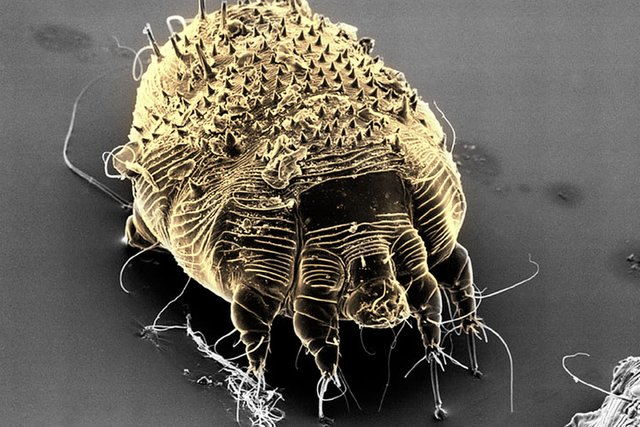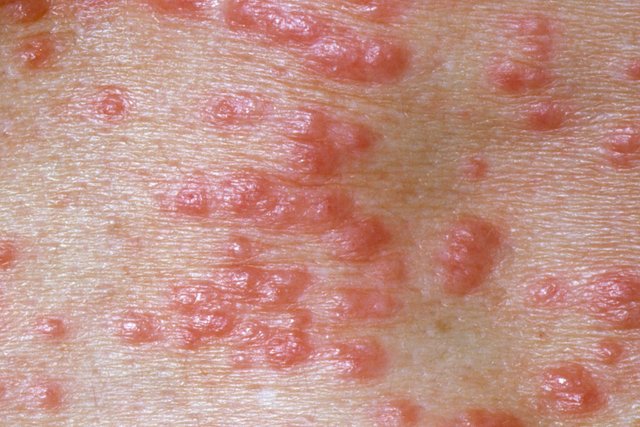What is Scabies?
Scabies is a skin infestation caused by a mite known as the Sarcoptes scabiei. Untreated, these microscopic mites can live on your skin for months. They reproduce on the surface of your skin and then burrow into it and lay eggs. This causes an itchy, red rash to form on the skin.
Scabies Symptoms
After the initial exposure to scabies, it can take up to six weeks for symptoms to appear. The symptoms usually develop more quickly in people who’ve had scabies before.
The hallmark symptoms of scabies include a rash and intense itching that gets worse at night. Continuous scratching of the infected area can create sores that become infected. If this occurs, additional treatment with antibiotics for the skin infection may be recommended.
Common sites for scabies in older children and
adults includes the:
√ wrist
√ elbow
√ armpit
√ nipple
√ penis
√ waist
√ buttocks
√ area between the fingers.
Scabies in babies and toddlers, and sometimes the very elderly or immunocompromised, can includes the:
√ head
√ face
√ neck
√ hands
√ soles of the feet.
The rash itself can consist of tiny bites, hives, bumps under the skin, or pimple-like bumps. The burrow tracks of the mite can sometimes be seen on the skin. They may appear as tiny raised or discolored lines
What Causes Scabies?
Scabies is the result of an infestation of tiny, eight-legged mites. These bugs are so small that you can’t see them on your skin, but you can certainly see their effects.
The mites will burrow into the top layer of your skin to live and feed. Female mites will lay eggs. Your skin will react to the mites and their waste, and you’ll develop a red, itchy rash.
These mites are easily passed between people. Direct skin-to-skin contact is the most common way to share the infestation.
The mites can also be spread through infested:
√ furniture
√ clothes
√ bedding
Facilities where people live in close contact to one another often see infestations spread easily. These may include nursing homes or extended-care facilities.
Scabies Treatment
Treatment for scabies usually involves getting rid of the infestation with prescription ointments, creams, and lotions that can be applied directly to the skin. Oral medications are also available.
Your doctor will probably instruct you to apply the medicine at night when the mites are most active. You may need to treat all of your skin from the neck down. The medicine can be washed off the following morning.
Make sure you follow your doctor’s instructions very carefully. You may need to repeat the topical treatment in seven days.
Some common medicines used to treat scabies include:
I: 5 percent permethrin cream
II: 25 percent benzyl benzoate lotion
III: 10 percent sulfur ointment
IV: 10 percent crotamiton cream
V: 1 percent lindane lotion
Your doctor may also prescribe additional medications to help relieve some of the bothersome symptoms associated with scabies. These medications include:
antihistamines, such as Benadryl (diphenhydramine) or pramoxine lotion to help control the itching
antibiotics to kill any infections that develop as a result of constantly scratching your skin
steroid creams to relieve swelling and itching
More aggressive treatment may be needed for severe or widespread scabies. An oral tablet called ivermectin (Stromectol) can be given to people who:
don’t see an improvement in symptoms after initial treatment
have crusted scabies
have scabies that covers most of the body
Sulfur is an ingredient used in several prescription scabies treatments. You can also purchase sulfur over the counter and use it as a soap, ointment, shampoo, or liquid to treat scabies.
It’s important to note, however, that no over-the-counter scabies treatments have been approved by the Food and Drug Administration.
During the first week of treatment, it may seem as if the symptoms are getting worse. However, after the first week, you’ll notice less itching, and you should be completely healed by the fourth week of treatment.
Skin that hasn’t healed within a month may still be infested with scabies mites. It’s important to remember that “post-scabies itch” can last up to one month.
Contact your doctor right away if you find that symptoms continue after four weeks of treatment.
References
°Scabies, symptoms and treatment

